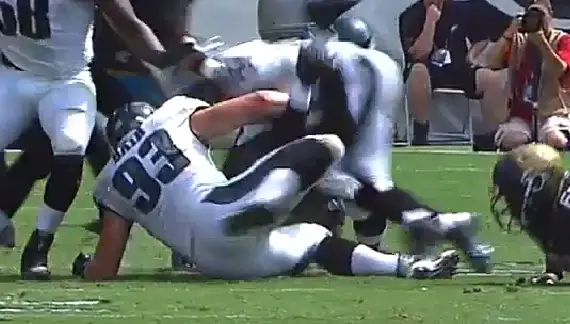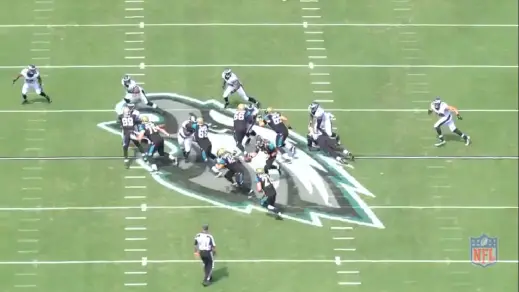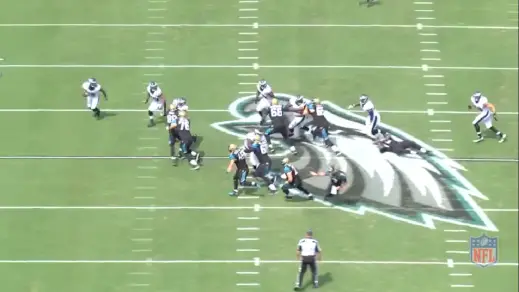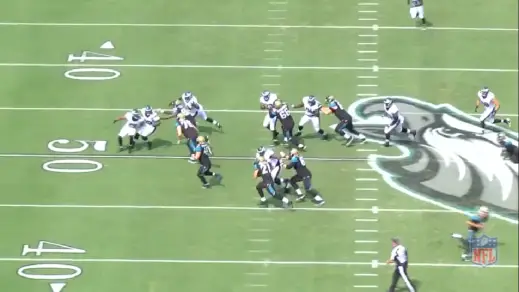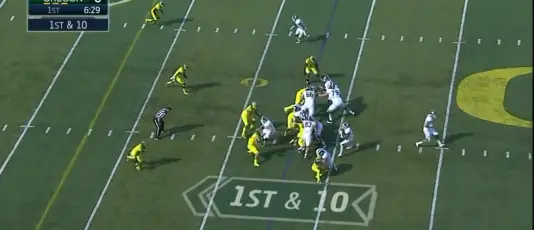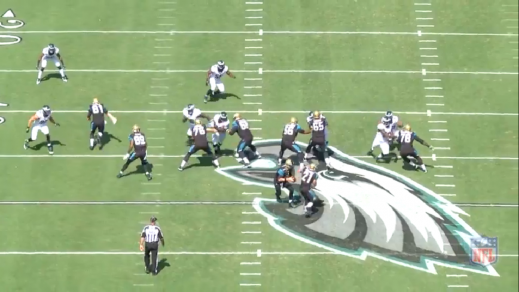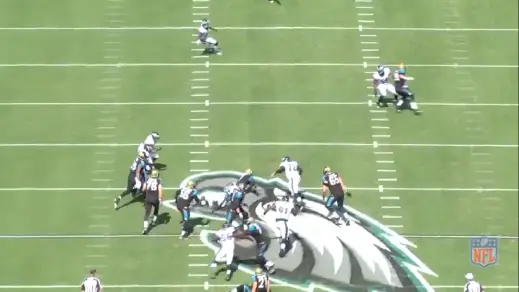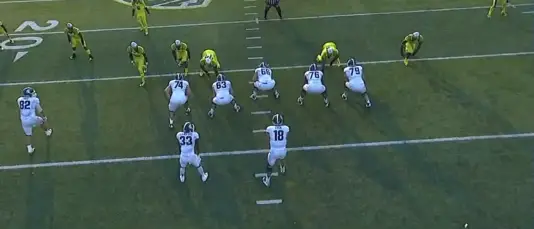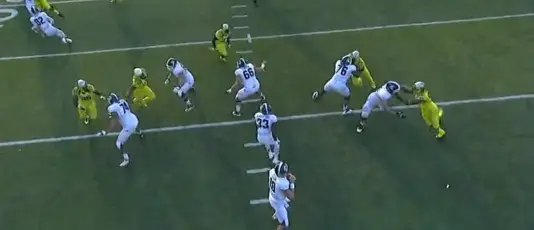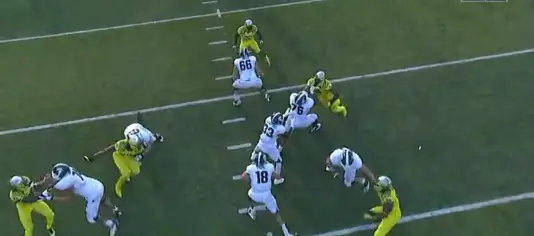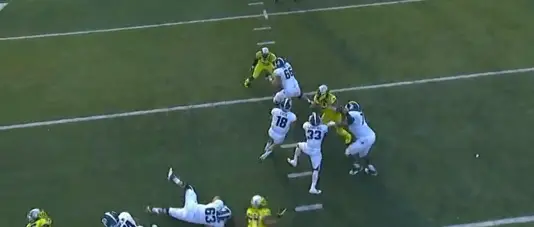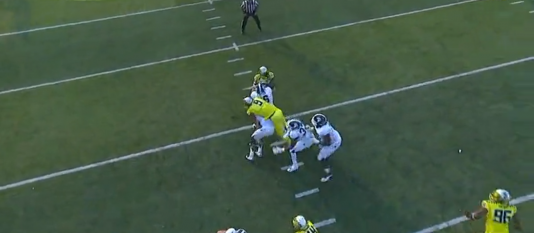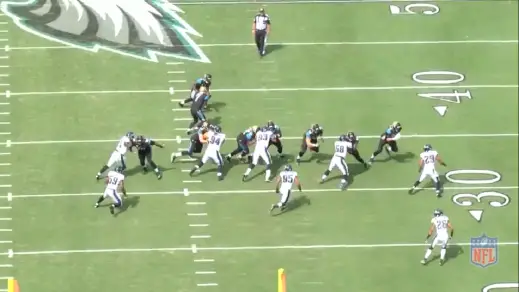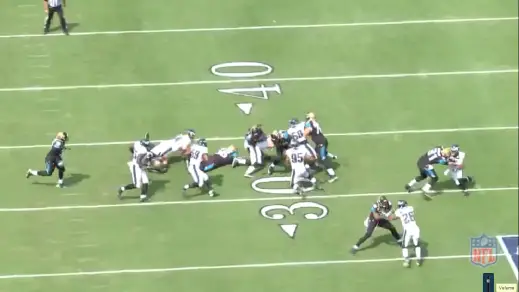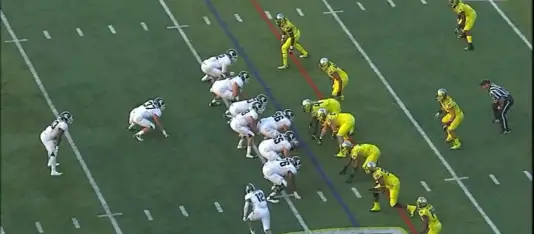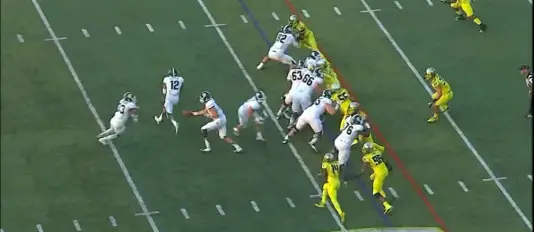There is a reason why defensive line guru Jerry Azzinaro was the one Oregon position coach who joined Chip Kelly on the Philadelphia Eagles’ coaching staff. The 3-4 defensive scheme and two-gap technique are just as important to Kelly as the fast-tempo, zone-blocking, and packaged plays. Azzinaro was Kelly’s right-hand man in installing the 3-4 as the base defense at Oregon, and Kelly felt it was necessary for him to help implement the scheme in Philadelphia as well.
Basic math may have an influence on why Kelly prefers a two-gap, 3-4 scheme, just as it explains why he favors offensive concepts such as the inside zone read. Three defensive linemen are asked to control a total of six gaps, while two outside linebackers set the edge.
“Usually you have to outnumber them in the box, but if you do, you’re a little bit lighter in the secondary,” Kelly said, according to Philly.com‘s Jeff McLane. “So if you have defensive linemen that can two-gap and make plays off of two-gapping, then I think you can play with one less guy in the box at times.”
This contrasts a one-gap technique, which allows defensive linemen to penetrate a single gap coverage but assigns linebackers primary responsibility to cover the gaps not controlled by the linemen.
Two-gapping can be challenging for defensive linemen because it requires them to read the movement of offensive linemen before they attack a gap. It is crucial for them to quickly and accurately “read and react” to the play, or the running back could have a wide open lane to paydirt.
Eagles starting defensive end Fletcher Cox had a great game in Week 1 against the Jacksonville Jaguars, as he recorded six tackles and recovered a fumble for a touchdown. His exceptional combination of size and athleticism appealed to Andy Reid’s defensive coaching staff, which used a one-gap, 4-3 scheme. Beginning his second season under Kelly and Azzinaro, Cox showed he can channel his natural ability in the 3-4 scheme as well.
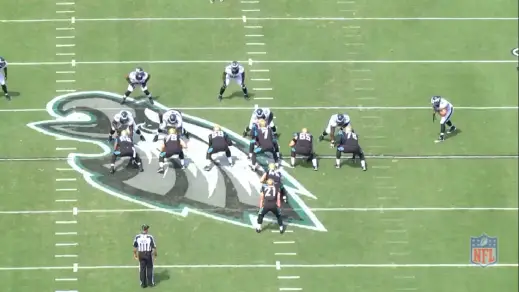
Cox (No. 91) is the right defensive end in the Eagles’ base 3-4, opposite left defensive end Cedric Thornton (No. 72).
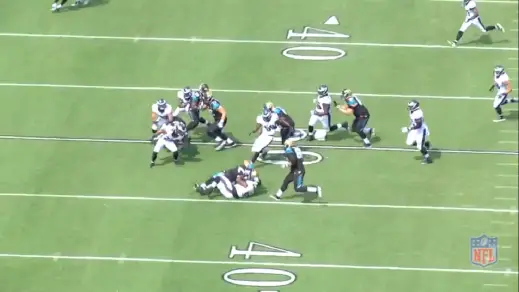
Cox finishes the play, but the outstanding effort is nullified by a penalty against him for a horse-collar tackle.
Kelly and Azzinaro left Eugene almost two years ago, but their ideas remain a staple of the Oregon defense under head coach Mark Helfrich, defensive coordinator Don Pellum, and defensive line coach Ron Aiken. The Ducks depend on starting nose tackle Alex Balducci, and starting defensive ends Arik Armstead and DeForest Buckner to clog up inside running lanes.
One play in the first quarter showed how Oregon’s front three did the dirty work and allowed inside linebacker Joe Walker to make a tackle.
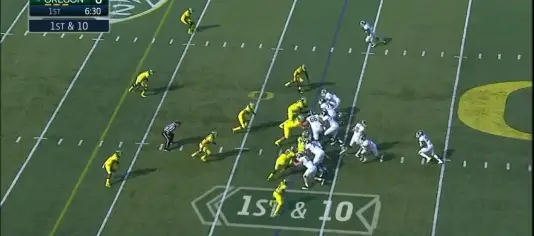
Balducci (No. 56) engages the center to disrupt his path, while Buckner (No. 44) takes on a double team.
Two-gap technique might be challenging for defensive linemen, but when executed correctly, it makes life much easier for linebackers who can more easily avoid offensive linemen.
Both the Eagles and the Ducks use stunts from their base look to confuse opposing offensive lines and create mismatches. Against the Jaguars, Eagles defensive coordinator Billy Davis called a blitz in which Cox and starting nose tackle Bennie Logan executed a twist stunt.
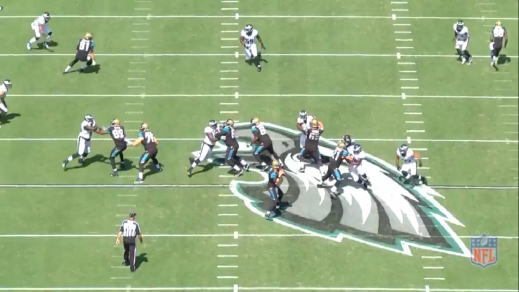
The center has no one to block, while inside linebacker Mychal Kendricks (No. 95) is unblocked on the blitz.
It paid off on this play to have an athletic nose tackle such as Logan who can create mismatches by correctly executing a twist stunt. Once again, the front three put in the dirty work and made it easier for the linebacker to make a play.
Because a good hybrid defense requires outside linebackers who are somewhat competent in coverage, the Ducks’ scheme helps disguise where the pressure comes from. Offensive linemen must be prepared for a pass rush from both inside and outside linebackers, along with the reality that any of them could be decoys who drop into coverage. In a twist from the concept just discussed, the threat of a blitz by the inside linebacker helps a defensive lineman record a sack on the following play.
Like the Ducks, the Eagles mix in even fronts to add complexity to their scheme. On this play, the Eagles overload the weak side. Though the alignment is different, former Duck and current Eagles defensive end Brandon Bair shows gap control is just as important as it is in the base front.
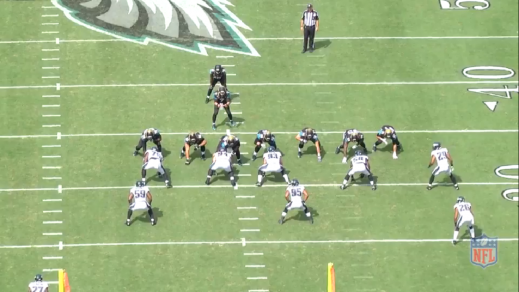
Vinny Curry (No. 75), Beau Allen (No. 94), and Bair (No. 93) are the Eagles’ second-team defensive linemen.
Oregon similarly overloads the defensive line to one side in certain situations. On a crucial 4th-and-1 play in the fourth quarter against Michigan State, Pellum overloaded the left side of the defense. By doing so, he put trust in his defensive line to get in the backfield and seal off running lanes.
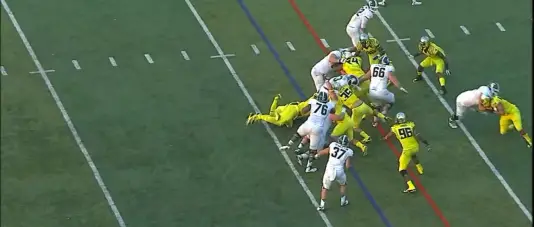
Oregon makes the gang tackle because the gaps are sealed off, and the running back has nowhere to run.
Good execution is the key to the effectiveness of the 3-4 scheme. It has been four years since Kelly first implemented the scheme and the Oregon defensive line is now a well-oiled machine.
The Eagles defense ranked 10th in the NFL against the run last season. Although there are some occasional lapses such as in Monday night’s 30-27 victory over the Colts, the team is usually stingy against the run. The key is to improve the pass rush and, as seen earlier, there are some signs the defensive line will help the entire defensive unit accomplish this. No one should doubt that the Eagles and Ducks know football games are won in the trenches.
Top photo from video
Joe Kearns is a senior at the Pennsylvania State University majoring in Economics. He intends to pursue a career in the banking and financial services industries, but is also a lifelong diehard Philadelphia Eagles fan who enjoys analyzing college and pro football film as a hobby. Along with being a fan, Joe’s football knowledge comes from his days as a center, defensive tackle, and long snapper for his high school in Mt. Lebanon, Pa. Though he is a Nittany Lion, he has taken a great interest in the Oregon football team since Chip Kelly became the Eagles head coach. He loves pancakes ( and not just the breakfast food).

